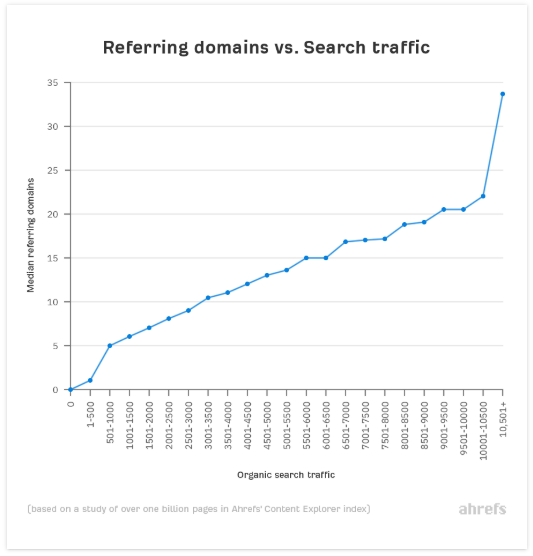October 7, 2025
 by Hardy Desai / October 7, 2025
by Hardy Desai / October 7, 2025

In this digital age, success isn't solely determined by what you know but also by who you know.
The importance of connections cannot be overstated. Traditional methods of blasting out messages can get lost in the noise of a content-saturated web. This is where blogger outreach emerges as a powerful strategy. By building mutually beneficial relationships with influential bloggers in your niche, you can introduce your brand to a fresh set of readers who already trust their recommendations.
Blogger outreach software helps streamline this process by providing tools to identify relevant bloggers, personalize outreach efforts, and manage communication effectively.
Blogger outreach is the process of businesses connecting and building relationships with bloggers or content creators within a specific industry. These partnerships allow companies to collaborate, promote products or services, and enhance brand visibility among the bloggers' audience.
This article explores the benefits of a strategic blogger outreach campaign and equips you with the knowledge to implement it successfully.
Keep reading to discover how to craft compelling pitches, build trust with bloggers, and measure the impact of your outreach efforts.
A successful blogger outreach campaign requires more than a cold email and a content link. You need to research, personalize, nurture, and measure. Below is a step-by-step guide to help you implement a blogger outreach strategy that builds long-term value — not just backlinks.
The first step is finding bloggers who speak to your ideal audience and publish content relevant to your business. Don’t just focus on high-traffic sites — focus on relevance, engagement, and authority.
Start by defining your criteria. Ask:
Use tools like BuzzSumo, Ahrefs, or SEMrush to analyze top-ranking blogs in your niche. Social media platforms like Twitter and LinkedIn are also helpful for spotting micro-influencers with tight-knit communities.
It’s also wise to check previous content partnerships. If a blogger has featured similar companies, they’re more likely to be receptive. Look for signs of influence — social shares, comments, newsletter engagement — and build a prospect list segmented by priority and outreach potential.
Avoid irrelevant or inactive blogs — quality beats quantity. A single link from a niche expert can outperform ten links from generic content sites.
By starting with the right targets, you set your outreach campaign up for meaningful connections and measurable results.
Mass emails don’t cut it anymore — personalization is the difference between ignored pitches and real responses. Before hitting send, take time to understand each blogger’s voice, preferences, and audience.
Here’s what you should research:
Your goal is to show that you’re not just looking for a link — you’re genuinely interested in contributing value to their audience. Keep your pitch short but relevant. Skip the fluff. Explain why your content matters to their readers, and what they’ll get out of working with you (e.g., expert content, cross-promotion, exclusivity, etc.).
Avoid these mistakes:
If possible, engage before the pitch by following them on social media, commenting on their posts, or share their work. Building rapport beforehand dramatically increases your open and response rates.
Outreach is about building relationships, not transactions. Show up as someone who respects their work — not someone looking for a quick backlink.
Once you’ve identified and researched your targets, the next step is writing a pitch that resonates. This is where most outreach fails — not because the idea is bad, but because the value isn’t clear, or the message gets lost in a sea of cold emails.
Start with a strong subject line that signals relevance and value. Personalization works here too — referencing the blog name, topic, or a mutual connection can increase open rates.
Your email should include:
Here's a simplified example:
Subject: Loved your post on influencer marketing — quick idea?
Hi [Name],
I just read your article on [Topic] and loved your take on [specific insight]. I work with [Your Company] and just published a guide on [Related Topic] that I think your audience would find helpful — especially the section on [specific detail].
Would you be open to reviewing it or possibly linking to it in your upcoming content? Happy to return the favor or collaborate on future posts.
Thanks for considering!
– [Your Name]
Keep it brief, clear, and focused on them. Always follow up — many successful placements happen on the second or third email.
Think beyond the link. The most valuable outreach results come from ongoing relationships, not one-time placements. If a blogger trusts your content, they’ll continue to mention you — often without you asking.
So how do you turn a pitch into a partnership?
Building goodwill leads to invitations, recommendations, and even referrals. Some of the best SEO results come from influencer flywheels — bloggers who continue to link to you because they genuinely like your content.
This long-game approach also opens the door to co-marketing efforts like webinars, lead magnet swaps, and social giveaways. And the more touchpoints you create, the more likely you are to earn organic mentions — the holy grail of outreach.
In short: focus on building relationships, not just rankings.
Even the most thoughtful outreach can’t succeed without clear tracking. You need to know what’s working, what’s not, and where to double down.
Start by setting outreach KPIs, such as:
Use CRM or outreach tools like Pitchbox, BuzzStream, or Respona to manage conversations, track responses, and monitor outreach stages. UTM parameters can help you trace referral traffic back to specific blogs or campaigns in Google Analytics.
It’s also smart to keep a running spreadsheet or dashboard that logs:
Review and iterate monthly. Are certain topics or pitches getting more traction? Are specific bloggers sending quality traffic? Use that data to refine your approach.
Outreach isn’t “set it and forget it.” It’s a flywheel — the more you learn and adjust, the better your results.
Blogging is among the top three primary forms of media used by content marketers today. And why not? Blogging pleases search engines, establishes you as an expert in your domain, builds audience trust, feeds the social media strategy, and generates leads. In fact, companies that blog generate 67% more leads, making them a valuable channel for marketers.
That’s probably why you have a blog, right? But is your blog delivering the desired business outcomes? If you are still reading this, then in all probability, your response is negative. Trust for customers is as critical as product quality and value. Further, the survey pointed out that influencers and thought leaders are trusted more than brands or the content they offer.
Though blogging has been at the forefront of most digital marketing strategies, leveraging it for brand promotion has become ever more critical today. Customer response to brand promotional efforts is changing. Moreover, businesses have to deal with a lot of competition, making it challenging for them to stand in the clutter and earn customer trust.
Blogger outreach allows you to leverage the influence of thought leaders while helping with:
People’s ability to trust your brand is tied to a third-party recommendation or social proof! Thus, having a niche influencer campaigning for your business is a smart (and cost-effective) move.
Blogger outreach goes far beyond link building — when done right, it becomes a strategic channel for content amplification, thought leadership, and brand trust. Here’s what businesses stand to gain from a well-executed blogger outreach program:
Working with reputable bloggers helps you earn editorial backlinks from relevant, high-authority domains — a top signal for search engine ranking. Unlike link farms or low-quality directories, blogger backlinks are contextually placed, making them both algorithm- and user-friendly.
Blogger collaborations often result in co-created or referenced content that’s topical and useful for real audiences. Influential bloggers are tuned into what their readers care about, which means your message gets embedded in content that’s up-to-date, well-written, and highly shareable.
Mentions from trusted bloggers act as third-party endorsements — a form of social proof that increases consumer confidence. Whether it’s a product review, guest post, or expert quote, blogger content can position your brand as credible and informed within your niche.
Instead of casting a wide net, blogger outreach allows you to zero in on niche audiences already interested in your product or topic. This laser focus often results in higher conversion rates than traditional advertising.
Even the best content falls flat without the right amplification. Blogger outreach gives your content legs — boosting reach through shares, mentions, and backlinks that drive qualified traffic back to your site.
Building long-term partnerships with bloggers can lead to recurring exposure opportunities — from annual gift guides and webinars to podcast guest spots and co-branded campaigns. These relationships often open doors to other creators and audiences.
Beyond backlinks, blog mentions can increase branded search volume, reduce bounce rates, and improve time-on-site metrics. All of this contributes to better organic visibility over time.
Partnering with bloggers gives you a steady stream of fresh content about your brand across the web. This “always-on” presence helps keep your brand relevant and discoverable in fast-changing search results and AI-generated answers.
Check out G2's curated list of the top free blogger outreach software tools to find the perfect platform to kickstart your campaigns — without spending a dime.
When planning to undertake an outreach campaign, it’s wise to do some research on the type of strategy that’s most relevant to your niche. Read through the five types of blogger outreach shared below to choose the one that takes you closer to your business objectives.
Link building has always been at the center of a business's off-site SEO strategy. If you look at the complete list of Google’s ranking factors, backlink factors appear right at the top as they form the basis of the Page rank algorithm. Thus, link building makes an effective outreach strategy, allowing you to improve your online presence.
In fact, a study conducted by Ahrefs confirms the relationship between backlinks and organic traffic.

However, not all backlinks are equally effective in getting you closer to your goals. Make sure you pay attention to the relevance and authority of the linking sites.
Links from relevant websites (related to your niche) hold more value. For instance, a beauty blogger would benefit from earning a link from an influential cosmetic blog or beauty magazine.
Say you’re looking for a search marketing consultant for your business. You have two prospective consultants, A and B. Consultant A is known to receive more backlinks from authoritative sites like Search Engine Land or Entrepreneur in comparison to consultant B. Which one will you trust? Undoubtedly consultant A. Backlinks from influential sites not only improve your ranking but also help you earn customer trust.
Guest posting is by far the most effective way to make your business website the hub of your inbound marketing efforts. Statistics reveal that 63% readers perceive blogs with multiple authors to be more credible.
Moreover, it’s social proof for your content. If an influential website publishes your content, they are, in a way, vouching for it. This helps improve authority, drive qualified traffic to your site, earn relevant backlinks, and generate leads. So go ahead and contribute to major publications relevant to your niche to get your brand in front of a relevant audience without having to pay a dime.
The best blogger outreach programs focus on developing a symbiotic relationship with the influencer. Developing meaningful partnerships and co-creating content with an influencer can not just improve your brand visibility but also strengthen the influencer’s following. Further, since the influencer stands to gain from this relationship, they will speak passionately about your brand and content.
The BuzzSumo-Moz content partnership has been one of the most successful ones I can think to my mind. The collaboration helped both brands improve their following and, most importantly, analyze millions of articles to gain market insights. Influencers know what content works best for engaging their audience. Leverage the strong connection they share with their followers by partnering with them for content creation.
Email outreach is the process of reaching out to influential people with the objective of networking, earning links, or promoting your content or services. But how do you send an outreach email without looking like a spammer?
Not to forget, the dreaded cold shoulder every marketer gets after attempting a pitch! Almost 92 percent of outreach emails sent are ignored. Hence, it’s wise to send the right type of outreach email that not only helps you achieve your objective but also focuses on building relationships.
Has an influencer or authoritative website already linked to your content? Well, congratulations! But don’t stop there. Go ahead and share the post on social channels to amplify your reach and gain more social shares.
Also, set aside a part of your marketing budget to promote the content shared on their site about your brand. The influencers or bloggers will be thrilled at the visibility they have gained by working with you. That’s extra motivation for them to collaborate with you in the future.
Here’s an idea of a simple blogger outreach email template for you to use next time:
Dear [name],
My name is [your name], and I’m reaching out today to ask you if you’d be willing to give [my article/website] a look and possibly add a link to your [content piece]. I saw you have experience writing about [X topics], which is also my area of expertise.
If you’re not looking to add links to other content right now, I’m wondering if you’re open to a content swap or guest posts. If so, I’d be more than happy to write for your website!
Let me know your thoughts. We can hop on a call if that’s easier!
Thank you so much.
[your name]
[contact information]
Though exciting and worth every bit of the effort and money invested, blogger outreach campaigns can be tiring and monotonous. In order to get the best out of your outreach strategy, count on the blogger outreach software shared below. From helping you find the most suitable influencers for your business to tracking the number of leads generated, these tools can help you streamline your outreach efforts effectively.
Today, several blogger outreach tools are available to marketers. Each tool has a unique way of quickly locating relevant influencers or bloggers, recording their contact information, finding trending content, and measuring the campaign's effectiveness.
Blogger research tools can help you look for influential blogs. Some tools can help you discover influential people behind the blog, along with their bio. It also shares the number of followers and the social authority, a social metric that also takes into account the level of influence a user has on their followers.
For professional link building, you can also use a combined CRM platform plus link-building tools to help you scale your link building efforts or other tools to streamline your outreach process. What’s more, some tools can even help you find email addresses, verify them, and allow users to schedule emails on their own end.
Social media monitoring tools help monitor various keywords in your niche, allowing you to identify guest blogging opportunities. Moreover, they can monitor mentions of keywords on social media, identify trending topics, and give you a peek into competitors’ backlink data and activities on social media. These social tools are a must-have for outreach campaigns.
Effective content intelligence tools help you track trending content, post popularity, influencers involved, and the number of engagements it has received. All you need to do is type in the topic in the search bar.
Blogger outreach, when done right, can build powerful relationships and drive meaningful results. But without clear ethical boundaries, it can quickly cross into spammy, manipulative territory — damaging both your brand’s reputation and search engine performance. Here's what you need to know to stay compliant and credible.
Search engines like Google actively penalize tactics designed to manipulate rankings — especially those involving unnatural or purchased links. That means blogger outreach efforts must steer clear of anything that resembles a “link scheme.”
Red flags to avoid:
The solution: focus on editorial value. Links should naturally support the content and serve the reader. If you’re offering compensation, use proper link attributes like rel="nofollow" or rel="sponsored" to stay compliant.
Regulatory bodies like the FTC require full disclosure of any compensation or material benefit exchanged for content or links. This includes payments, free products, or services offered in return for exposure.
Best practices for disclosure:
Failing to disclose can lead to penalties for both the blogger and the brand, as well as a loss of audience trust.
The most sustainable blogger outreach is built on respect, relevance, and long-term collaboration — not just transactional link building.
To keep relationships healthy:
Remember: outreach isn’t a shortcut — it’s a relationship. Acting ethically protects your SEO, your brand, and the partnerships you build along the way.
| Area | Checklist item | Yes/No |
| Link scheme red flags | Avoid buying dofollow links without rel="sponsored" |
☐ |
| Don’t use PBNs or spammy link networks | ☐ | |
| Limit exact-match anchor text in guest posts | ☐ | |
| Only publish on relevant, quality blogs | ☐ | |
| Disclosure & transparency | Clearly state if a post is sponsored or compensated | ☐ |
Use proper tags (rel="sponsored" or rel="nofollow") |
☐ | |
Use proper tags (rel="sponsored" or rel="nofollow") |
☐ | |
| Place disclosure at the top of the content | ☐ | |
| Follow FTC/local ad disclosure laws | ☐ | |
| Relationship building | Personalize every outreach email | ☐ |
| Respect the blogger’s tone, audience, and content rules | ☐ | |
| Follow up after successful placements | ☐ | |
| Offer value in return (promos, backlinks, referrals) | ☐ | |
| Maintain ongoing communication — not just one-off asks | ☐ |
Got more questions? Get your answers here!
Start by defining your niche and audience. Use tools like BuzzSumo, Ahrefs, or Google advanced search to find blogs covering similar topics. Evaluate each blogger based on content quality, domain authority, engagement (comments/social shares), and whether they’ve collaborated with similar brands before. Look for relevance over reach — quality > quantity.
There’s no one-size-fits-all number, but a good rule of thumb is to aim for 10–20 targeted, personalized outreach emails per campaign, rather than blasting 100+ generic pitches. The key is personalization and quality — even a few strong partnerships can yield great results.
A strong outreach email is:
Avoid generic pitches — tailor every email to show you’ve done your research.
Not necessarily. Many bloggers accept guest posts, expert quotes, or resource links without payment — especially if your content provides value to their readers. However, if you’re offering compensation (e.g., product placement, sponsored post), it must be disclosed and properly tagged (rel="sponsored").
Track key metrics like:
Use tools like BuzzStream, Respona, or even Google Sheets + UTM links to manage and measure your campaigns effectively.
Unethical outreach — such as paying for links without disclosure, using spammy anchor text, or violating FTC guidelines — can lead to Google penalties, brand distrust, or legal trouble. Always disclose partnerships clearly, follow link tagging rules, and build relationships authentically.
A robust blogger outreach strategy not only connects you to the top influencers in your niche but also fuels blog growth and visibility. Use the insights and strategies shared above to build and implement a winning blogger outreach strategy for your business.
To keep your blogger outreach as fresh as possible, get the right email marketing software to send out cold emails that connect.
Hardy Desai is the Co-Founder and Director of Supple , a digital marketing agency specializing in SEO. The company has offices in Melbourne and Sydney, employing a dedicated team of over 135 people globally.
Starting an account-based marketing program from scratch can sound intimidating. The good news...
 by Joel Garcia
by Joel Garcia
The pace of online learning has accelerated faster than anyone could imagine in the past...
 by Eduard Klein
by Eduard Klein
Ten years ago, the concept of hiring a social media manager seemed outlandish to most brands.
 by Haley Fraser
by Haley Fraser
Starting an account-based marketing program from scratch can sound intimidating. The good news...
 by Joel Garcia
by Joel Garcia
The pace of online learning has accelerated faster than anyone could imagine in the past...
 by Eduard Klein
by Eduard Klein


